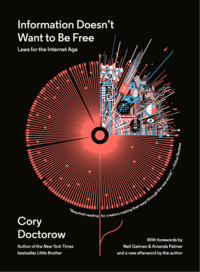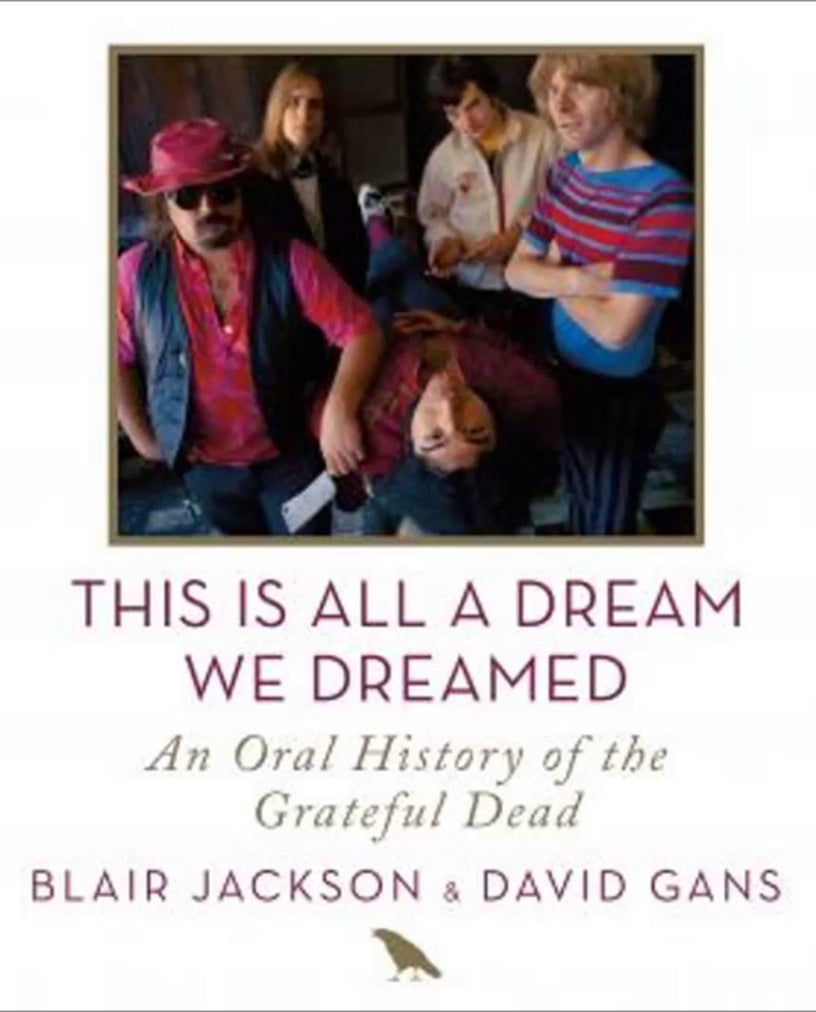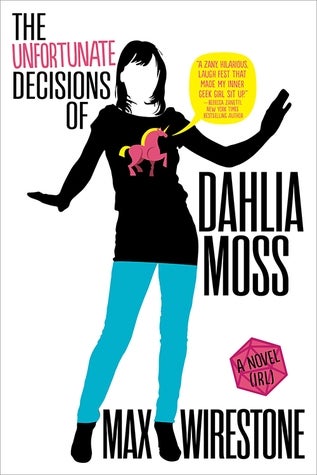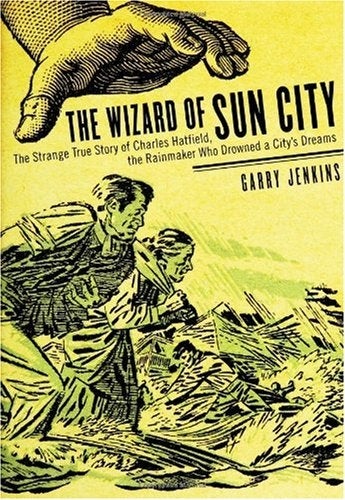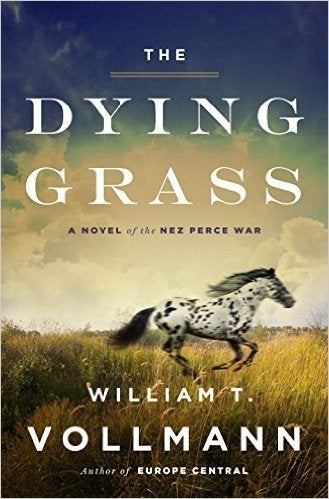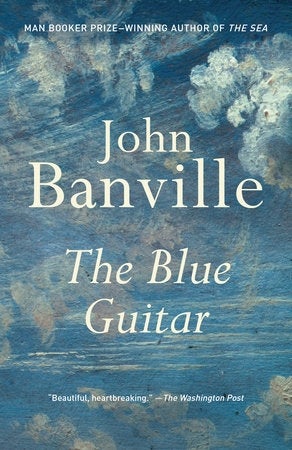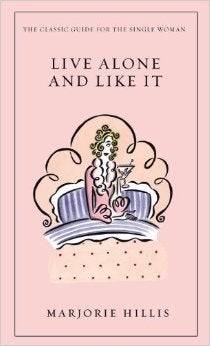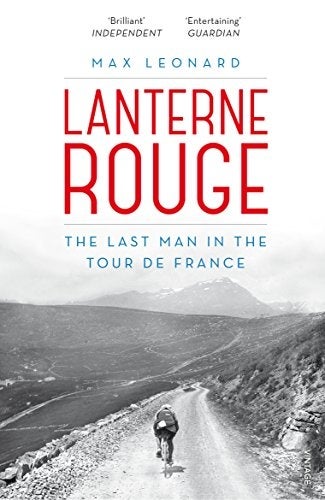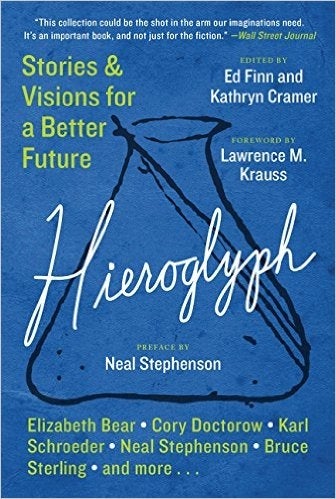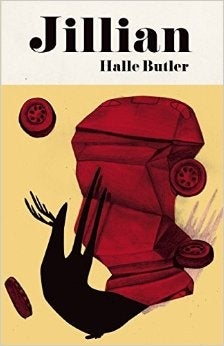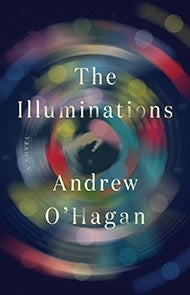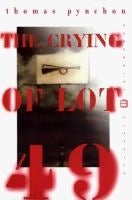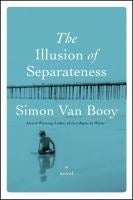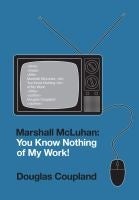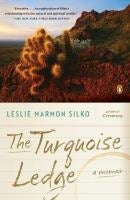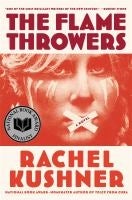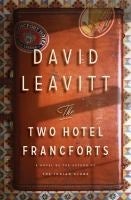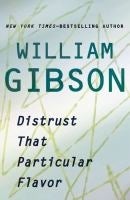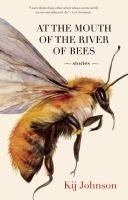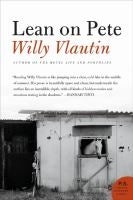SDPL Recommended Books
Staff Picks 2015
Librarian IV, Central Library, San Diego Public Library
San Diego Union Tribune, December 20, 2015
In this discussion of copyright and economics in an online world, the author practices a little counter-intuitive trouble making by turning old ideas inside out and citing his own set of laws. As technology simplifies and lowers the costs of production and distribution of content, who gets paid the most and when, is a moving target. Online stores attempt to get a larger share of the profit by invoking copyright in order to lock up content and make it exclusive. Digital locks are flimsy, though, and copying can’t be prevented. Copyright doesn’t protect authors and content isn’t king. Conversation is king because, at the scale possible with social media, it “turns random strangers into paying customers.” Paying customers are good for creators who can allow free copying of their work as advertisement for in person events or branded merchandise. “Information doesn’t want to be free-- people do,” is Doctorow’s Third Law.
Librarian II, City Heights/Weingart Library
San Diego Union Tribune, December 6, 2015
Noted Grateful Dead authors Jackson and Gans provide an exhaustive and essential work on San Francisco’s most beloved psychedelic ensemble through archival and recent interviews with band members, extended family, associates, fans, and every other possible subgroup spawned by the band. Filled with anecdotes that even the most seasoned Deadhead will not have heard, this work also speaks to a much larger audience, examining how the group and their music evolved from Belmont bar band to house band for Ken Kesey’s Acid Tests, finally transforming into a countercultural icon known for intuitive, improvisational explorations. From the influence of hallucinogens on their craft to their unconventional but very successful business practices, over 100 interviewees tell the story, with narratives throughout each chapter provided to set context. This title is authoritative with all sources impeccably documented. “This Is All a Dream We Dreamed” represents oral history at its finest.
Branch Manager, University Community
San Diego Union Tribune, November 22, 2015
This debut novel by author Max Firestone is a lighthearted mix of mystery, quirky characters, and MMORPGs (Massively Multiplayer Online Role-Playing Games). Think of it as a cozy mystery for millennials – as if chick lit author Sophie Kinsella wrote a book featuring the boy detective Encyclopedia Brown. Firestone’s snappy dialogue keeps the pace moving and a few bizarre scenes (imagine a live performance of Godspell in your living room) are pure fun. Plot twists keep you guessing until the quick reveal at the end, but the most entertaining parts of the story involve the main character Dahlia Moss in the virtual world. This is a perfect read for summer vacation with a brief but engaging look into the world of online gaming. Warning: contains one swear word. All the others are bleeped. Literally.
Librarian IV, Special Collections, San Diego Public Library
San Diego Union Tribune, November 8, 2015
A century ago, the drought-fearing city councilmen of San Diego hired a rainmaker. For a handshake pledge of $10,000, Charles Hatfield set up his equipment at Lake Morena and began “milking the skies.” In the days that followed, San Diego was deluged with nearly 30 inches of rain. Mission Valley flooded, reservoirs filled and collapsed, and roads and bridges washed away. Did the rainmaker produce the epic storms of January 1916? Based largely on contemporary newspaper accounts and oral histories, Garry Jenkins’ book examines the strange career of an itinerant sewing machine salesman—turned rainmaker, who claimed the historic rainfall as “an act of Hatfield.” An entertaining read, and timely, in this El Nino year.
Librarian IV, Scripps Miramar Ranch Library
San Diego Union Tribune, October 25, 2015
The American novelist William Vollmann is a librarian’s dream. He combines meticulous, in-depth research with a sprawling scope and a cutting first-person eye few writers attempt to muster, let alone imagine possible. “The Dying Grass” is Vollmann’s (or, as he styles himself, William the Blind) fifth entry in his “Seven Dreams” series, an epic cycle of retelling the history of North America and its indigenous peoples reckoning with European-American civilization. Here he turns his skills at summoning images of the 1877 Nez Perce War and the U.S. Cavalry’s pursuit of the restless few who resisted reservation life. While clocking in at a grand 1200 pages (plus footnotes) “The Dying Grass” is a daunting undertaking for any reader, rest assured in the knowledge should you choose to dive in, this is one dream you will never forget.
Branch Manager, Carmel Valley Branch Library
San Diego Union Tribune, October 11, 2015
Irish writer, John Banville’s 16th novel is a meditation on love, art and grief. The protagonist, Oliver is a minor painter who strives to work out his grief through painting and seducing a variety of women. Banville, who won the Man Booker prize in 2005, evokes the Irish landscapes with heart-stopping beauty and color. Oliver struggles with whether it is possible to convey by words or paint true human emotions. The title if the book is an homage to the Wallace Stevens poem, “The Man with the Blue Guitar”. The most telling line in that poem reads, “You have a blue guitar, you do not play things as they are.” But listening to Oliver spin his tale feels like an afternoon with a friend by a lake somewhere where the sky is very blue. For something lighter, Banville also writes engaging mysteries under the pseudonym, Benjamin Black.
Librarian IV, Central Library, San Diego Public Library
San Diego Union Tribune, September 27, 2015
Written by an editor for Vogue in 1936 and reminiscent of the snappy banter in a Ginger Rogers’ film, this self help book manages to inspire independence in the single woman as well as a desire to maintain a well stocked bar and a wardrobe of bed jackets. In the chapter entitled, “When a Lady Needs a Friend,” Hillis gives sound advice on the subject of making contacts: “Be a Communist, a stamp collector, or a Ladies’ Aid worker if you must, but for heaven’s sake, be something.” She presents the case of Miss MacD. who, “furnished her kitchenette elegantly from the ten cent store” and “began to invite everyone who couldn’t possibly give her an inferiority complex to come to supper.” Not to be missed: her discreet take on romance in “Will You or Won’t You” and her discourse on the four types of pajamas and occasions for wearing them.
Soldier of Change: From the Closet to the Forefront of the Gay Rights Movement - Stephen Snyder-Hill
Librarian III, Sciences Area, Central Library, San Diego Public Library
San Diego Union Tribune, September 13, 2015
In this revealing memoir, the author relates his experiences in the U.S. Army before and after the repeal of the “Don’t Ask, Don’t Tell” policy. His experiences led him to submit a question about the possible extension of military spousal benefits to legally married same sex couples to a presidential candidates debate in September 2011. The response transformed Snyder-Hill into an activist for marriage equality and GLBT service members. He also relates his coming out process and relationships with friends and family. Inspiring and insightful.
Branch Manager, Pacific Beach/Taylor Branch Library, San Diego Public Library
San Diego Union Tribune, August 30, 2015
The red lantern on a train's caboose, signaling the last carriage, inspired the unofficial nickname for the last bicyclist in each Tour de France. "Lanterne Rouge" examines the stories of several of the men who gained an unusual sort of celebrity by being the last to finish cycling's most grueling competition. Beginning with Arsène Millochau in 1903, who finished nearly 65 hours after the winner of the first Tour, Leonard develops his narrative that these men who finished last were survivors, rather than losers. Millochau finished 21st in a field which began with 60 riders - last because 39 others dropped out. The lanterne rouge is often feted by spectators for his perseverance, and the book is an affectionate mix of tales of the men who schemed to "win" the lanterne rouge and those who couldn't outrace the dubious honor. Interesting even for readers who are not cycling enthusiasts.
Librarian II, Central Library, San Diego Public Library
San Diego Union Tribune, August 16, 2015
This anthology gathers top science fiction writers, scientists, and engineers in a storytelling endeavor of “techno-optimism” to change the world. Neal Stephenson and the Center for Science and the Imagination created Project Hieroglyph to foster collaboration between writers and researchers in a dialogue of ideas, with an invitation to “join the conversation to rewrite the future.” It counters the preoccupation with dystopian futures and the dispiriting decline of the space program, evidence of what Neal Stephenson calls “innovation starvation.” These stories combine the optimism and big ideas of Golden Age SF with today’s diverse talent, including Elizabeth Bear, Gregory Benford, Kathleen Ann Goonan, Vandana Singh, and Bruce Sterling. Among the best are Cory Doctorow’s “The Man Who Sold the Moon,” a group of Burning Man enthusiasts who put a 3D printer on the moon, and Brenda Cooper’s “Elephant Angels” where a network of volunteer observers use drones to catch wildlife poachers.
Branch Manager, Scripps Miramar Ranch Library
San Diego Union Tribune, August 2, 2015
Spare, wry and tongue-in-cheek, Halle Butler’s acidic “Jillian” is the best book you’ll read this year that should be made into a movie. A debut novelist from Chicago, Butler brings to life two awful yet relatable coworkers, Megan and Jillian, paragons of self-loathing and diminished dreams. While obnoxious optimist Jillian grates on Megan’s nihilistic nerves, the book reads like a tennis match of spleen, sarcasm and chaos as they both spiral to the bottom. “Jillian” is not for those bereft of a sense of irony, but its scope is striking when one realizes Butler has written close to the mark for how we live today. “Jillian” is an unsentimental depiction of two equally disenfranchised souls, resentful of one another’s obliviousness and oblivious to the other’s resentment.
Branch Manager, Carmel Valley Branch Library
San Diego Union Tribune, July 19, 2015
It is the time of the war in Afghanistan and Luke Campbell is a serving on a humanitarian mission a long way from his home in Glasgow. His grandmother, Anne Quirk, who eagerly receives his letters, is rapidly declining into dementia. Anne was once a well known photographer and still sees the world with an artist’s eye. The novel alternates between Luke’s experiences in Afghanistan and his grandmother’s memories of her one grand passion for a fellow photographer. Things culminate when Luke returns and takes Anne on a trip to Blackpool, the scene of the yearly “illuminations”. This was also the setting of her frequent rendezvous with her lover. As the trip progresses, Luke begins to understand what is behind his grandmother’s long held secrets.
Librarian IV, Central Library, San Diego Public Library
San Diego Union Tribune, July 5, 2015
When Harpo speaks, he sounds like a wise guy from a thirties noir film. Adolf Arthur (Harpo) Marx grew up among the tenements of the Upper East Side and dropped out of school in second grade. Literally dropped out. Of a window. Harpo finds joy in absolutely everything. This comes through in stories about his family travelling the Vaudeville circuit in the ‘teens, tales about sophisticated and acerbic New Yorkers who were the wits of the Algonquin Round Table, or acting as a spy while visiting the Soviet Union. Harpo socialized with millionaires, playwrights, and artists and has something telling to say about all of them. This is, most likely, the sweetest, gentlest tell-all ever written. Late in life in Southern California, Harpo so firmly believed in happy endings that he refused to take down Christmas decorations rather than disappoint his children.
Librarian III, Library IT, Central Library
San Diego Union Tribune, June 21, 2015
Published in 1966, The Crying of Lot 49 recounts the adventures of California housewife and Young Republican Oedipa Maas as she settles the estate of deceased ex-boyfriend Pierce Inverarity. Oedipa believes she may have discovered an underworld of misfits and political subversives who communicate via a centuries-old shadow postal system known as the Trystero. Alternatively, the Trystero may only be the projection of her increasingly—she worries—unhinged mind. Yet another possibility is that she is the victim of an elaborate joke perpetrated by Inverarity from beyond the grave. Real, imagined, or merely a cruel put-on, the Trystero comes to represent for Oedipa an "alternative to the exitlessness, to the absence of surprise to life, that harrows the head of everybody American” she knows. Short but capturing the essence of the author’s loopy lyricism, The Crying of Lot 49 is an ideal entry point into the Pynchon canon.
Librarian IV, Central Library
San Diego Union Tribune, June 7, 2015
Conversational, if by that you mean playfully deconstructing the mid-century educational Zeitgeist, in tone, the first surprise of Florey’s exploration of this lost art is that there is a history. The second surprise is that it is interesting and funny. Florey wonders how 19th century educators came up with the idea, because “trying to stuff the complexities of the English language into flat visual structures is a bit like trying to force a cat into the carrier…” She explains how it works to reveal grammatical structure while dreamily evoking Sister Bernadette’s, “firm and saintly script.” Florey entertainingly diagrams sentences by several authors known for distinctive grammatical choices, including Henry James, whose style H.G. Wells described as a hippopotamus “resolved at any cost upon picking up a pea.” Read this book for the information it contains or show up just for a nostalgic dip in the collective memory.
Branch Manager, La Jolla/Riford Library
San Diego Union Tribune, May 24, 2015
For San Diegans, the writer Sandor Marai is like a hidden treasure discovered in our own attic. His suicide in an apartment overlooking Balboa Park in 1989 went largely unnoticed. It was only many years later, with the translation into English of the novel Embers, that we learned a giant of Central European literature had been a long time San Diego resident, continuing to write in his native Hungarian. Other translations have followed, notably Casanova in Bolzano. Embers features an elderly aristocrat preparing to meet a childhood friend he hasn’t seen in over 40 years. The last time they were together, the friend aimed a gun at him during a hunt and an affair with the aristocrat’s wife was revealed. Set against the backdrop of Europe’s slide into conflict, embers of buried feelings, including love and revenge, are poetically conjured in a tale full of atmosphere and suspense.
Branch Manager, Scripps Miramar Ranch Library
San Diego Union Tribune, May 10, 2015
“A Little Lumpen Novelita” is a novella about the dispossessed, whether dispossessed of property, family, or memory itself. Roberto Bolaño traces the unlucky path of Bianca and her brother, two Spanish orphans making sense of a forlorn Rome in the dusk of history. Told through the sentiment and tears of a Bianca all grown up, reminiscing of her past with criminals and ne’er-do-wells, it can be hard to decipher if Bianca is blasé or bitter or both. Recounting her unexpected love affair with an older, retired bodybuilder named Maciste, Bianca has to face the sad truth her love was unrequited. Meanwhile, Bianca’s lowlife roommates have another fate in store for Maciste himself. Bolaño draws a portrait at once so vivid and vague you cannot but help imagine Bianca, a classic unreliable narrator, with a cigarette in hand and tears in her eyes.
Branch Manager, Carmel Valley Branch
San Diego Union Tribune, April 26, 2015
Van Booy’s lyrical novel alternates in setting and time between World War II and the present and between Europe and the United States. Connections between characters are not revealed until later in the story and unfold slowly. Think six degrees of separation across time and space. The novel opens with the story of Martin, a caretaker at an old age home for actors in modern day Los Angeles and continues with Mr. Hugo, a German soldier, to John who is wounded in the war and trying to get home to his young wife who believes him dead and finally to Amelia, a young blind woman who works at the Museum of Modern Art in New York, helping to create art that people can touch. The language in this novel is unusually poetic and some critics have taken exception with it, but to me it adds to the dreamlike quality of the intersection of seemingly separate lives.
Librarian IV, Central Library
San Diego Union Tribune, April 12, 2015
Readable and short, this biography is a thoughtful and witty examination of McLuhan’s personality, influences, and work. It contains fun facts (McLuhan’s extra brain artery) and a footnote concerning a grape-sized clump of living tissue. Coupland outlines McLuhan’s basic ideas: that the manner in which you receive information affects the way you perceive information (the medium is the message), that technology circumvents time and space connecting individuals into a ‘global village’ reverting to an oral culture, and that the tribe is subject to panic terrors “for in it,” says McLuhan, “everything affects everything all the time.” McLuhan recognized television as an extension of the nervous system and predicted the effect of the internet by studying the effect of the printing press. He also predicted, as Coupland states, a “terrifying capacity for rumour, disinformation, and surveillance,” a danger present with the printing press and exponentially expanded with each successive technology.
Librarian II, Central Library
San Diego Union Tribune, March 29, 2015
Native American writer and artist Leslie Marmon Silko shares stories of her life in the American Southwest. Tales of daily life with a menagerie of dogs, parrots, and native wildlife are interspersed with memories of family and Native American history. A child of mixed heritage, Silko was raised on the Laguna Pueblo in New Mexico with a strong tradition of storytelling and a spiritual connection to the natural world. The landscape and living creatures of the Sonoran Desert near her Tucson home are part of her life story, particularly the rattlesnakes, which are closely observed and respected for their intelligence and individuality. Her memoir is sprinkled with the turquoise stones she finds on solitary walks in the desert, which link together the vignettes and entice readers like a trail of breadcrumbs. Well-known for her fiction and poetry, Leslie Marmon Silko has a passion for social and environmental justice that energizes her writing.
Branch Manager, La Jolla Riford Branch Library
San Diego Union Tribune, March 15, 2015
This is a thought provoking novel, whose art lies in its success in tackling themes as lofty and diverse as particle physics, the financial crash and reconstruction in Afghanistan, while never losing the drive of an intriguing personal story. The book is narrated by a well-educated Pakistani banker who came to America as a child and an impoverished compatriot friend, Zafar, who shows up unexpectedly at his door one day. Through these characters we come to understand a contradictory mix of envy and resentment toward the West, symbolized by a relationship with a privileged Western woman who toys with and discards Zafar. We are shown the perspective of an immigrant never quite at ease in his adopted country. Ultimately the book is about how much it is culture which determines what is considered ‘knowledge’. Sprinkled throughout are gems of close behavioral observation that keep the pages turning.
Branch Manager, Scripps Miramar Ranch Branch Library
San Diego Union Tribune, March 1, 2015
The Flamethrowers builds a chaotic world out of chrome, sunlight, sex, concrete and class struggle. Kushner’s creation breaks open the bright colors and grainy tones of the ‘70s, following an artist named Reno from New York’s Lower East Side to Italy’s Autonomist Movement. On the way her ideas about art, and more importantly the world, change drastically as she toes the line between bourgeois limits of acceptable adventure and revolutionary spaces of real desire. Of course, Kushner’s use of language is not just sensationalism, it is literally grounding the senses back to life experience: “It was the morning of the fourth of July and kids were lighting smoke bombs, sulfurous coils of red and green, the colors dense and bright like concentrated dye blooming through water." For those of us willing to be seduced by all of this, The Flamethrowers doesn’t disappoint.
Branch Manager, Carmel Valley Branch Library
San Diego Union Tribune, February 15, 2015
Leavitt’s atmospheric novel depicts life in Lisbon in 1940 where Americans and Europeans have fled while Europe hovers on the brink of war. Two couples meet and while away the time waiting to catch the last ship sailing to America. Peter, the narrator and his wife, Julia are fleeing Paris because she is Jewish. But Julia has secrets back in New York that she doesn’t want her husband to discover. The other couple, Edward and Iris, want to return to England but can’t because their beloved dog would be quarantined. Everyone is hiding something and loyalties shift as the two husbands fall into an unlikely love affair. Which of the characters show themselves to be truly brave is unveiled in an exquisite ending that will have you eagerly turning the pages.
Librarian IV, Central Library
San Diego Union Tribune, February 1, 2015
Fascinating, predictive, insightful and quotable, my favorite essays in this collection describe a compulsively bespoke future as reflected in present day Japanese culture. As Gibson says, “…Japan is the global imagination’s default setting for the future.” He also says that it is “Like successive layers of Tomorrowlands, older ones showing through when the newer ones start to peel.” Whether it is mobile girls inventing a texting micro culture based on what was considered to be a secondary cell phone application or hidden boys, only leaving their rooms after midnight to visit ubiquitous and mythically sustaining convenience stores, or the obsessive perfection of a kindergarten mud ball craft project; Gibson evokes a present science fiction reality that is flat out cool. “Why Japan?” says Gibson, “Because they live in the future, but neither yours nor mine, and somehow make it seem either interesting or comical or really interestingly dreadful.”
Librarian II, Central Library
San Diego Union Tribune, January 18, 2015
Brilliant and quirky, the stories in this collection entice readers with their intriguing titles and cover a wide range of settings that rarely disappoint. Many of these powerful and thought-provoking stories explore human-animal relationships with a compassion that never succumbs to cuteness. The title story features a woman’s last road trip with her aging German shepherd and comes to a completely unexpected and fantastical, yet eminently satisfying conclusion. Author Kij Johnson has an exceptional talent for guiding the unsuspecting reader from the ordinary into extraordinary territory. Her spare language and reassuring voice have a quiet power that delivers strong emotion. Standout stories include ‘The Man Who Bridged the Mist’ (Hugo and Nebula winner), and ‘26 Monkeys, Also the Abyss’ (World Fantasy winner). Readers of Ursula K. Le Guin and Ken Liu will find much to savor in this collection.
Branch Manager, Scripps Miramar Ranch Library
San Diego Union Tribune, January 4, 2015
The books of Willy Vlautin seem to summon to mind vast, lonesome landscapes, neon motel signs in high desert air, and steel guitars weeping across the American west: his 2010 novel Lean on Pete is surely no exception. Living a hardscrabble life with his neglectful dad in the Pacific Northwest, teenager Charley sets out on his own and falls in with a surly racehorse owner named Del. As things move from bad to worse, Charley drifts from truck stop to 7-11 to greyhound bus from Oregon to Wyoming and beyond. He attempts to find his aunt, meets other lost souls of the highway, and like all of us, tries to catch a break in the process. An impressionistic, hazy yet heartfelt song for the road weary, Vlautin conjures up a vivid melancholy that is bitter as it is sweet.


